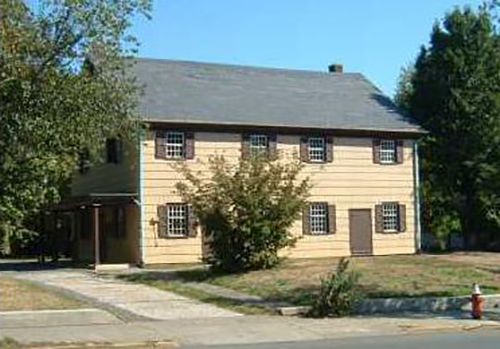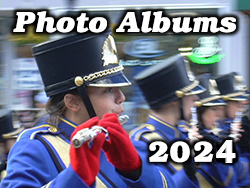June 13th marks the 240th anniversary of General George Washington’s arrival in the afternoon at Washington Rock. He was looking for a place up upon the mountain where he could look for the movements of the British forces on the Plains below. Although often asked, that was not the origination of the name of Plainfield and related entities.
The predominant religion in this area was the Quakers or Friends. General Washington had stopped at the farm of Jonah (or John) Vail after the noon repast to find a mountain lookout. Edward FitzRandolph who guided the General up to Washington Rock and the farm owner and the workers were all Quakers. Not important other than to realize what the philosophy and lifestyle was of the occupants of this area in these years.
It wasn’t until eleven years later that the Quakers moved their meeting house from Amboy (Perth Amboy ) to Plainfield. The group had been formally organized in 1686. So the Friends Meeting House was built in Plainfield in 1788. It may surprise you that this was even before George Washington was elected to be our first official President. The same Edward FitzRandolph that guided General George up to Washington Rock was on the committee to build the first Meeting House. Also contributing his labor as a carpenter to participate in the construction. The Meeting House has had several locations in Plainfield. But happily has resided at 225 Watchung Avenue for many years.
Shortly after 1900, Charles McCutcheon of Plainfield learned that Mr. Garretson who was operating the quarry on the mountain near the top of Washington Avenue had his eye on acquiring the land on the south side of the mountain to expand his operation. Being patriotic, McCutcheon realized that Washington Rock would be destroyed and therefore sought out others and in 1913 the Washington State Park Commission was formed to save the area by an Act of the NJ State Government.
At the same time Mrs. McCutcheon was instrumental in organizing the Continental Chapter of the DAR in constructing the 1912 monument as we see today and raising the $3,100 that it took to build it. They were Quakers. Their home, Dalnashea was operated as a Quaker retirement community into the 2000’s.
To summarize, the name Plainfield was not derived from the level farming fields referred to by the General as the “Plains” but actually for the Plain people or the Quaker influence that was so important at the time.
The Green Brook Cultural Heritage and Historic Preservation Committee and The Green Brook Historical Society meet the third Thursday of each month at 7:30 p.m. at Green Brook Town Hall located at 111 Greenbrook Rd., Green Brook, NJ. We are always looking for people interested in history and culture to join our group, as a guest or a member. For more information about the Green Brook Historical Society, visit www.gbhsnj.org.

- Home
- Publications
- Berkeley Heights Community News
- Clark Monthly
- The Chathams
- Cranford Monthly
- Elmora Hills
- Fanwood Post
- Florham Park Press
- Garwood Times
- Green Brook Gazette
- Kenilworth Business Life
- Life in Linden
- Long Hill Leader
- Madison Monthly
- Millburn Short Hills Monthly
- Mountainside View
- New Providence News
- Our Town Rahway
- Peterstown NJ
- Roselle Park Monthly
- Scotch Plains Monthly
- Spirit of Union
- Summit Times
- The Pride of North Plainfield
- Warren Monthly
- Watchung Post
- Westfield Monthly
- Articles
- NJLocalinfo
- Advertising Information
- About
- Submit News
- Photos





